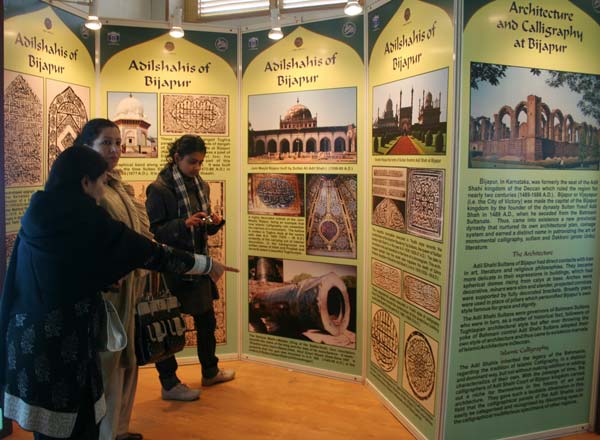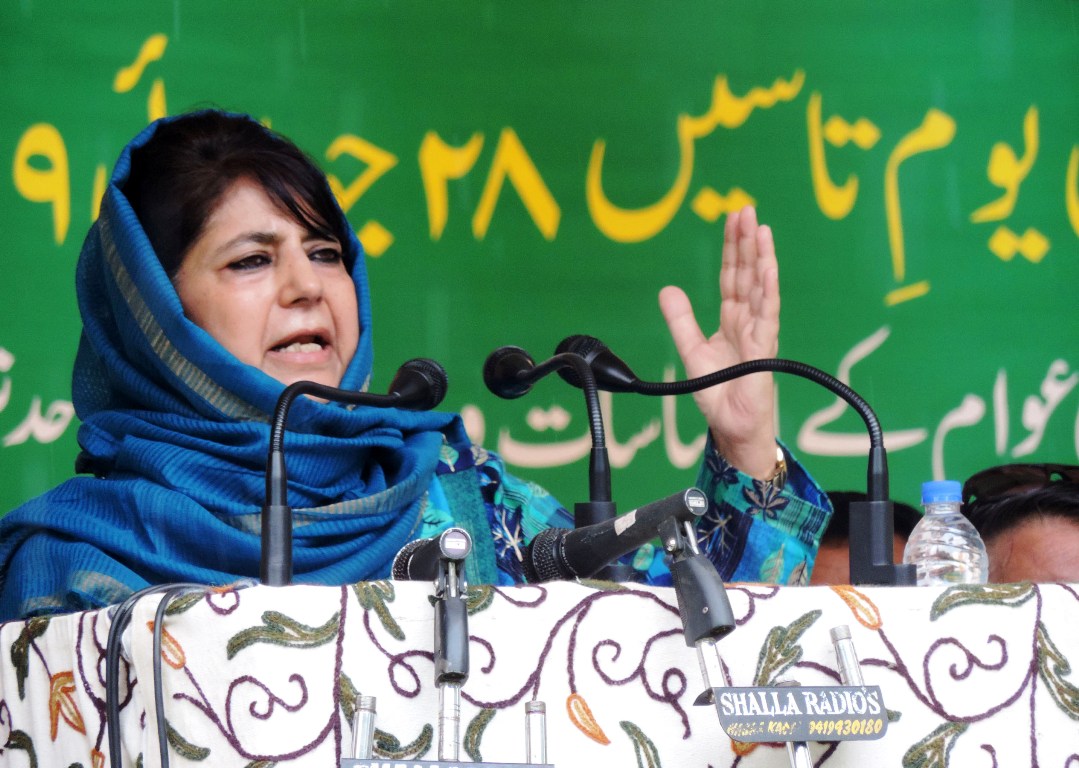KL Report
Srinagar

Archaeological Survey of India (ASI) on Wednesday opened the 10 day Travelling Photo Exhibition Calligraphy through the Ages at Lal Ded Memorial Cultural Centre in Habba Kadal. In partnership with INTACH, the exhibition will remain open till December 7 and is part of the 150th year celebration of ASI that was established in 1861.
M Salim Beg of INTACH told Kashmir Life that there are 110 display panels representing most of monuments from pre Mughal Muslim sultanate, Bengal, Bijapur, Golkanda, Sanskrit and Dravadian calligraphy. “It is worth watching and for every student of history it is a must see,” Beg said. “There are a number of experts who explain every single penal and that is a bonus.”
Dr G S Khawaja said the rarest exhibition showcases Arabic-Persian and Sanskrit-Dravidian Calligraphy on monuments, papers and coins. Separate panels have been devoted to calligraphy on stone inscriptions, in Holy Quran manuscripts, on paper and coinages of Sultans of Delhi and Mughal Emperors. Office of the Director (Epigraphy) for Arabic and Persian Inscriptions at Nagpur, he said, has gathered in the form of inked rubbings (estampages) of epigraphs, many marvels of Islamic calligraphy in India. He added that the epigraphy branch at Mysore has done pioneer work on Sanskrit and Dravidian epigraphs.
Calligraphy is writing things beautifully but, as an Islamic art, has got other connotations….and that means altogether a different art that influenced Islamic world so much so that history of medieval period in Arabia, Iran, central-Asia and Indian sub-continent can not be said complete without it. Islam forbids depiction of living beings, so all the efforts of graphic artists of the Islamic world were diverted towards beautifying their edifices, books, coinages etc. with different styles of calligraphy.
As early as 3rd – 4th century AD, the Arabic script was designed in southern Syria and northern Iraq, experts believe. Later, Prophet’s revelations were being jotted down on parchment, papyrus, velum and other less perishable material. Thus came to existence first ever style of Arabic writing to be called Kufi after its place of origin Kufa, the then capital of province of Iraq. The first four letters sent by Prophet Muhammad (PBUH) to heads of states preaching Islam were written in this style only. After that post ninth century AD many cursive styles of calligraphy namely like Naskh, Thulth, Muhaqqaq, Riqa, Diwani and Nastaliq came to existence. Of them, Tughra being the most fascinating style.
By the end of twelfth century when Turkish sultanate was established in northern India a new phenomenon of building mosques, tombs, madrasas, and palaces started. The question of adorning these edifices was much important. It was so addressed that epigraphical bands started appearing on the facades and arches of Islamic monuments.
ASI experts said the Indian calligraphists of India not only adopted and nurtured this art but added new dimensions to create marvels of calligraphy on stone, paper, metal objects, seals, farmans and coinages. Master pieces of Indian calligraphy still decorate the facades of medieval monuments like Taj Mahal Agra, Ibrahim Rauza Bijapur, Jamia Masjid Golconda, Adina Masjid Pandua (West Bengal), Ashrafi Mahal Mandu, Akbar’s Tomb Sikandara, Jami Masjid Delhi. Stone writings conventionally called epigraphs are the imperishable source of history of this art.
During India’s Muslim Rule the edifices built by Turks, Khalji, Tughlaq and Lodi Sultans were adorned by epigraphical panels done in beautiful Kufi and Naskh style of calligraphy. This tradition was further strengthened by calligraphers coming from central-Asia and Iran.
Iranian calligraphers of Safawid period led to the introduction of Thulth and Nasta‘liq style for monumental and manuscriptal calligraphy in the Indian sub-continent. Thereafter even coinage, farmans, seals and waslis were being written in Nasta‘liq only.
Mughal Emperors were connoisseurs of art. They not only patronised Islamic Calligraphy but they themselves learned it. Prince Dara Shukoh, Aurangzeb, Shuja, and Princes Zebunnisa were imparted training in calligraphy by Iranian calligrapher Abdur-Rashid Dailmi of Qazwin in Iran who was calligrapher of Emperor Shahjahan’s court. After
















“Bulbul Shah introduced calligraphy in Kashmir.” This is news to me. What is the source?
it is one of the most elaborate displays of the highest artistic taditions of Islam. The interpretation of the panels through crisp writeups opens up these treasures to discerning viewers. At a time when Muslims are faced with the challenges posed by KL